The Pagan and Christian origins of Halloween
The holiday’s evolution from an ancient Celtic tradition to a night of frightful merriment is over 2,000 years in the making.
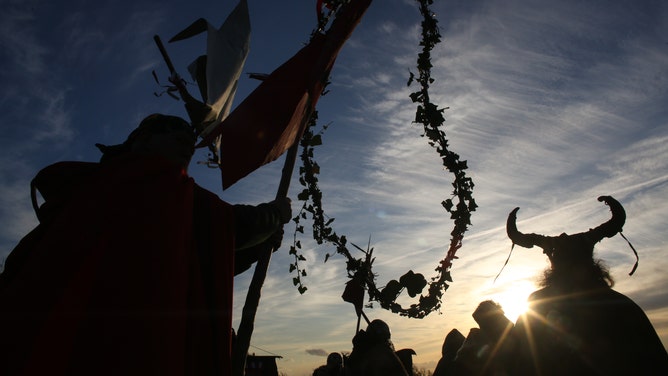
Samhain was celebrated throughout the British Isles. Here, modern celebrants of take part in a sunset Samhain ceremony in England.
(Matt Cardy / Getty Images)
‘Tis the season for costumes, ghost stories and all sorts of delightfully frightful trickery.
But what we know as a fun holiday season today is actually the latest iteration of an ancient, holy day once celebrated in Ireland.
Morphed and massaged by time, the celebration slowly incorporated new cultural elements that shifted it away from its spiritual origins to a more secular form celebrated around the world.
Despite its transformation, the spirit of the ancient holiday lives on, inspiring everything from the costumes we wear to the ghosts we fear — and everything in between — on Halloween.
Potent precursors
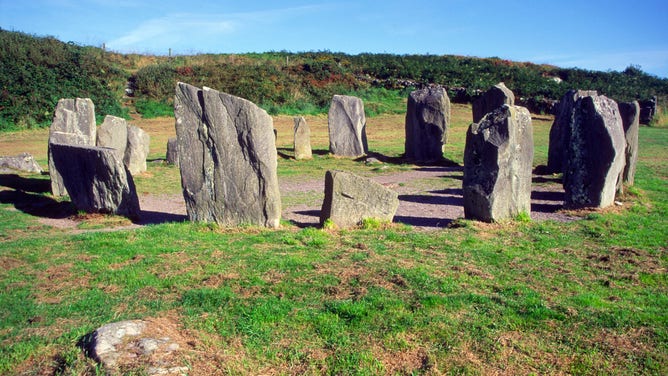
Drombeg Stone Circle in County Cork, Ireland. Built by the Celts, the circle of standing stones dates back to between 153 B.C. and 127 A.D.
(Geography Photos / Universal Images Group / Getty Images)
Over 2,000 years ago, an indigenous people called the Celts (pronounced "kelts") lived in an area that would one day be named Ireland.
The Irish Celts had many traditions, one of which being the precursor to Halloween: Samhain (pronounced "SAH-wen").
"Samhain is a word that means ‘end of summer’," said Clodagh Doyle, Keeper of the Irish Folklife Collection at the National Museum of Ireland.
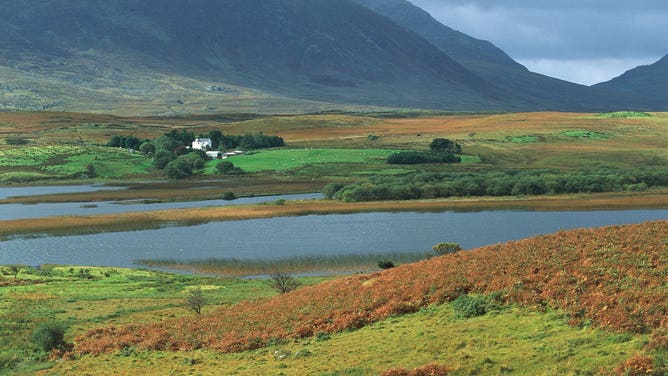
Fall sets on the Irish countryside.
(DEA / V. Giannella / De Agostini / Getty Images)
According to Doyle, the Celtic calendar year was divided into two halves. The first began on November 1 and was filled with dark days (winter), whereas the second half began on May 1 and was filled with bright days (summer).
Samhain, which occurred on the night before November 1, held particular importance to the Celts because it served as a bridge between the end of the bright days and start of the dark days.
"There is a real belief that this is a time that's not quite one season, not quite the other," said Doyle. For the ancient Celts, this in-between time was found to have great potential with the supernatural.
When death and darkness love us
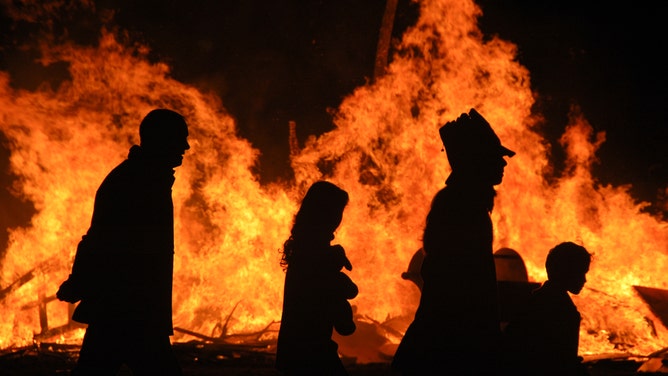
A family is silhouetted by a bonfire on Halloween night. Bonfires relate to death in Samhain tradition.
(Shay Murphy / Moment Editorial / Getty Images)
"A lot of our traditions around Samhain relate to death and the dead," said Doyle.
This is largely because, to the ancient Celts, death was not a final farewell for loved ones who passed away.
According to Doyle, "It wasn't that people died. They just actually went to another world."
During Samhain, the barrier between the world of the dead and the world of the living was thought to be at its thinnest.
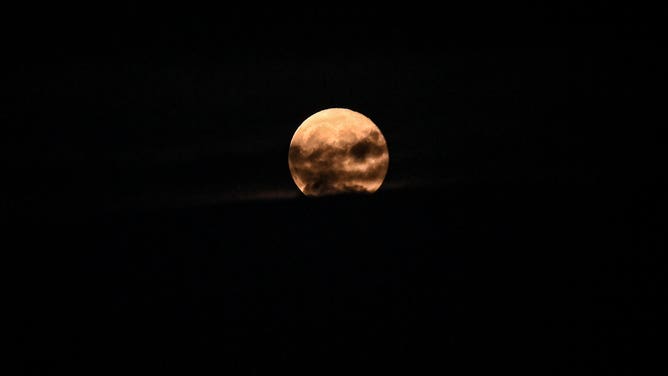
An October moon above Dublin, Ireland.
(Brendan Moran / Sportsfile / Getty Images)
"These times are always seen as liminal times," said Doyle. "When you're in that liminal time, anything's more possible — you're much more in touch with the supernatural."
Because of this connectedness, there was a belief that the spirits and the living would be able to move between the two worlds in the dark of Samhain night. Mythical creatures such as fairies were said to roam this night, as well.
This movement of the supernatural made Samhain a scary time of year, according to Doyle, and some people took advantage of it. For instance, people began wearing masks and costumes to frighten and delight their neighbors, hoping to get a treat from the household.
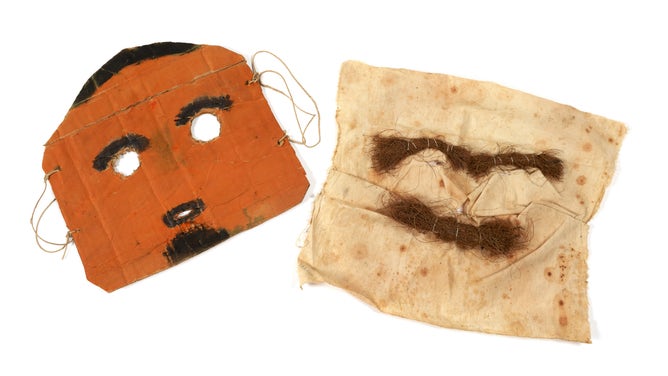
Halloween masks made and worn by children in Co. Wicklow, Ireland in 1951. One mask is made from a rectangular piece of unbleached calico with eyes and nose cut out. Coconut fibres have been used in bunches and sewn on with white thread to represent thick eyebrows and a moustache. Wool, hair and straw were used on fabric and cardboard masks in the area.
(National Museum of Ireland)
Harvest for the living
Samhain was associated with death and darkness. But since it occurred during fall and the end of the harvest season, it was also a time associated with life and feasting.
"This is the time of the year where you've reaped everything that the land can give you," said Doyle. "Everything in all of your harvest is in every berry that you could pick, every apple that you could pick, anything that's foraged from the land. "
"This is a time associated with the darkness and settling in and hibernating for the winter."
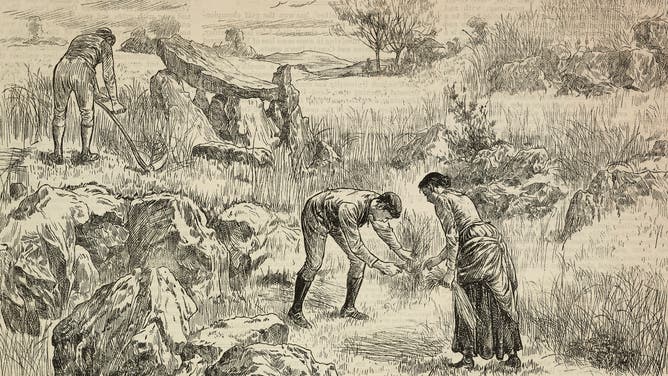
Saving the harvest in the Caher mountains of Ireland in the 19th century.
(DEA / ICAS94 / De Agostini Editorial / Getty Images)
According to Doyle, Samhain’s timing with the end of the harvest is the reason why apples, nuts and berries feature so strongly in traditions around Halloween. For example, the game of bobbing for apples has been a part of this celebration for hundreds of years.
While some traditions inspired by the harvest were intended to be fun, others had a more divine component due to our proximity with the spiritual world at this time.
One practice involved early Irish carving demonic faces into turnips to scare away evil spirits. The turnips, a vegetable harvested during this time, were then hollowed out and used as lanterns. [Learn how jack-o'-lanterns were inspired by a mythical trickster]
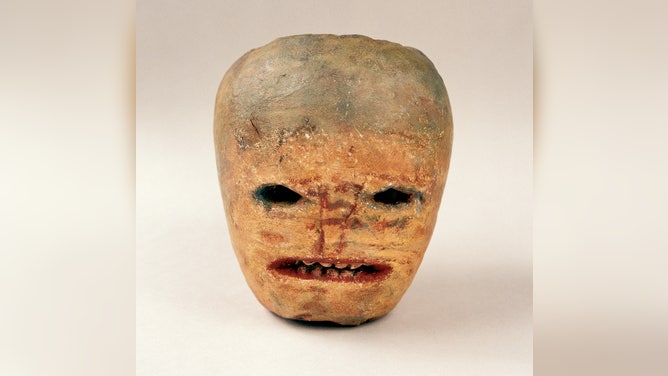
Scary lanterns were made using potatoes and turnips. This is a model of a Hallowe’en ‘ghost turnip’ taken into the Collection in 1943 from Fintown in Co Donegal.
(National Museum of Ireland)
People also thought they could determine their future on this night. According to Doyle, one way they’d do this is to throw a long apple peel over their shoulder, and the letter formed by the peel would be part of the initial of one’s future spouse.
"We talk about the supernatural world," said Doyle. "And I think when you have very dark things and there is little communication, you are looking to signs about how life will be."
"You are believing in a supernatural world because there's no explanation for some things."
O holy Halloween night

A traditional Celtic cross stands in the cemetery beside St. Canice's Cathedral in Kilkenny, Ireland. The Christian faith folded in elements of Celtic traditions, such as Samhain.
(Robert Alexander / Getty Images)
Samhain continued to incorporate new traditions. One of which made a significant impact on the holiday: Christianity.
According to Encyclopedia Britannica, the earliest known date of Christianity in Ireland is the 5th century. In the centuries that followed, the ancient Celts were converted to the Christian faith.
To facilitate this, the Christians incorporated methods that allowed some aspects of the Celtic faith to coexist with the Christian faith.
"Because we were pagan," said Doyle. "Christianity knew that it would never really take off, if it wasn't made easy for us."
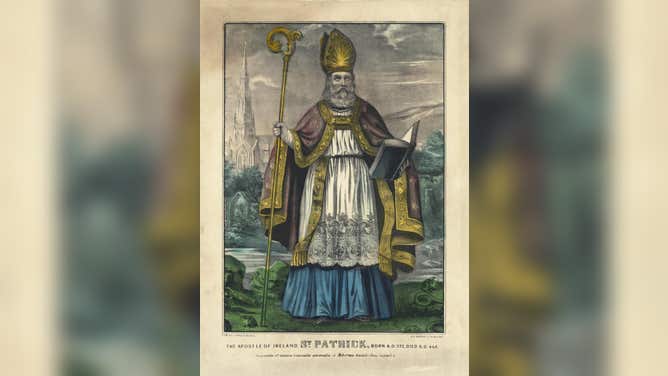
Saint Patrick, the national apostle and patron saint of Ireland. In the 5th century, he played a significant role in converting the indigenous Irish to Christianity.
(VCG Wilson / Corbis / Getty Images)
According to Doyle, the Church incorporated the traditions of Samhain into the Christian holidays of All Saints Day on November 1 and All Souls Day on November 2. These two days honored the saints and the souls of those who have passed away.
Samhain was set on the night before these holy days.
Samhain’s incorporation also led to its rebranding. According to Doyle, since Samhain now occurred on the eve of these holy or "hallow" days, Samhain became known as "All Hallows Eve", "Hallow Evening" and "Hallow Even".
Eventually, its new name was shortened to "Hallowe’en" or "Halloween".
Thriller night
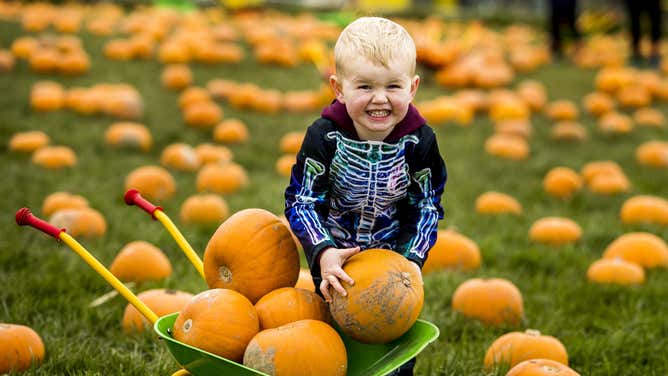
Boy dressed in a skeleton costume picking pumpkins in Belfast, Ireland.
(Liam McBurney / PA Images / Getty Images)
Over the years, the holiday that became known as Halloween continued to evolve.
Costumes became less frightening, jack-o’-lanterns became forms of art and fewer apple peels were used to determine romantic prospects.
The holiday has transformed into a night of entertainment.
But as we see in the ghost stories we tell, the horror movies we watch and the haunted houses we visit, the spiritual element initiated by Samhain lives on in our modern interpretation of this spooky holiday.